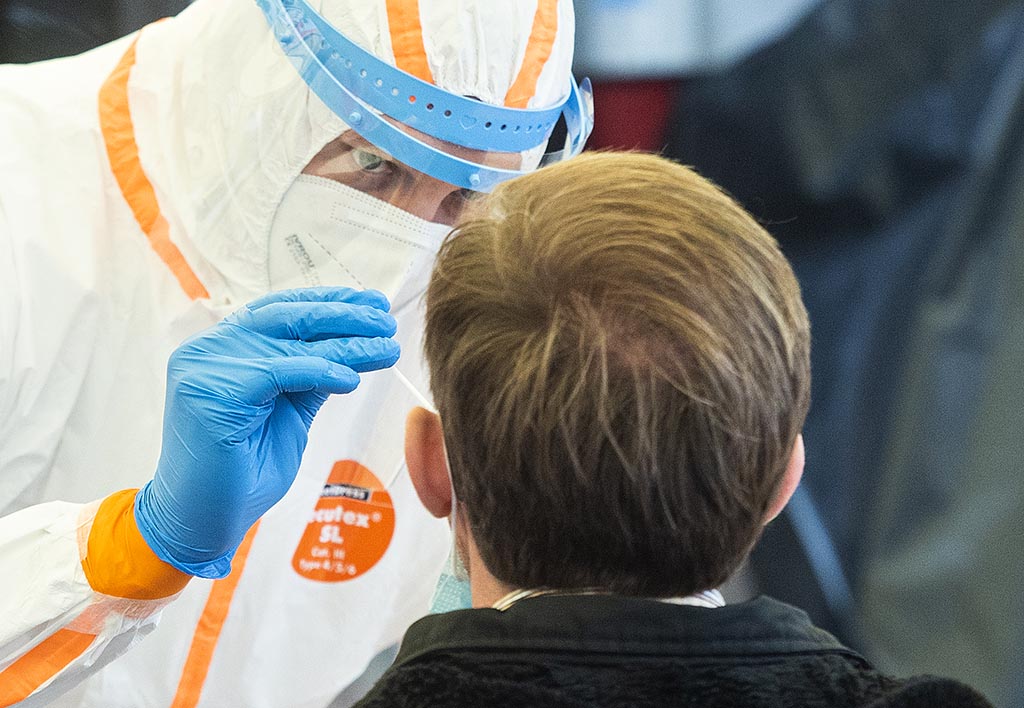The recovered-vaccinated-tested rule (preboleli, cepljeni, testirani – PCT) will be expanded to a number of activities starting from Monday under a new government regulation that comes amidst rising numbers of coronavirus infections and hospitals filling up quickly with Covid-19 patients.
The new regulation, which will come fully into effect within seven days, was presented by Health Minister Janez Poklukar on Saturday as he set out various scenarios under which the outbreak could spread, depending on the vaccination rates.
Th PCT requirement is being imposed on all those who come into contact with other persons or are involved in settings or activities where there is a direct risk of an outbreak.
The PCT rule will thus apply to staff in healthcare, public administration, education and training, social care, in-person retail and services, cultural activities, religious education or collective exercise of religious freedom.
Other activities and settings where staff would need to meet PCT rule include indoor sports, taxi services, common working stations, police, security, inspection services, traffic wardens and cabin lifts operators.
The rule will not apply in cases of emergency activities to provide care, public peace and order, medical assistance, rescue and disaster relief.
Exemptions also include children up to the age of 12, parents bringing young children into kindergarten or school, and customers of services and retail establishments.
However, the PCT would apply to inmates in resident facilities such as care homes, prisons, asylum centres and integration houses, or their visitors, including visitors of hospitalised patients, as well as athletes involved in contact sports in- and outdoors and cabin lift passengers.
For those who are not vaccinated or recovered, the testing requirement will also be satisfied with rapid antigen tests or self-testing once a week. Self-testing can take place at home or at work with the cost covered by the employer.
Tests for those who cannot get vaccinated due to their health condition will be paid for by the state. The same applies to voluntary self-testing of older primary school children and secondary school students.
Face masks will be mandatory in all indoor public spaces as well as outdoors when it is not possible to keep a distance of at least 1.5 metres.
There will some exemptions to the mask rule, including children up to the age of 7, pupils in the first five grades of primary school or first two grades of music school, pre-school teachers and pupils and students in dancing and certain music classes and physical education.
Masks will also not be mandatory when the PCT rule is being implemented in public spaces for members of the same household.
Presenting the measures, Poklukar reiterated the importance of vaccination, saying that unless a sufficient share of the population is immunised Slovenia is in for a “tough autumn”. The fourth wave is projected to peak in October.
The reproduction number showing how many people on average is infected by each infected person is currently between 1.2 and 1.5. Currently 47% of the population has received one vaccine dose and 43% and 43% have been fully vaccinated.
Should the reproduction number rise to 2, like at the peak of the second wave last year, and given a vaccination rate of 51%, hospitalisations would peak at about 2,900 with 560 intensive cases.
Given a 70% vaccination rate, the figures would drop to 1,600 and 320 respectively, with the same reproductive number, but Poklukar said that ICU cases peaked at 219 in the second wave.
If 70% of the population was inoculated, Covid-19 deaths would be halved, from what projections show would be 1,000 deaths given the vaccination rate of 51%.
“Such a pessimistic scenario can happen unless each one of us acts. Healthcare capacities would be stretched to the limit […] these are tragedies we can prevent with vaccination.”
The minister said the epidemic could be kept under control only if as many people as possible get vaccinated as fast as possible and the reproduction number is kept under 1.4.
By: J.S., STA


